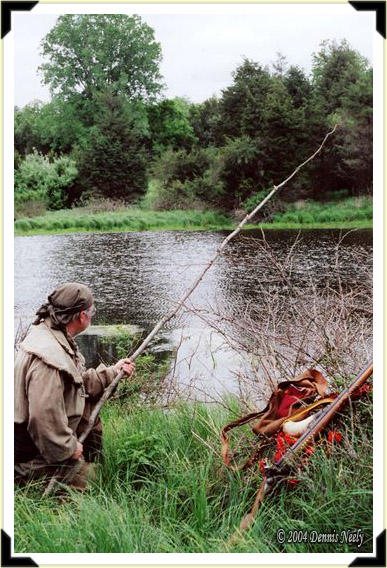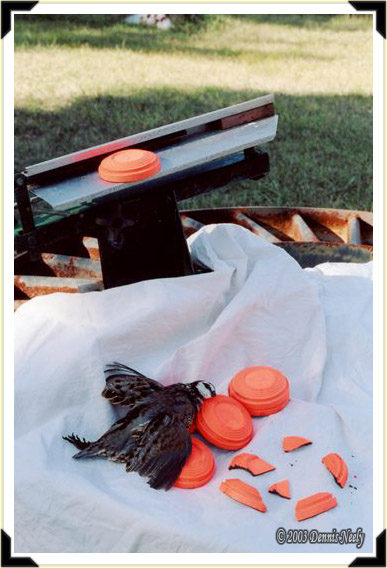-
Recent Posts
Categories
Archives
- November 2020
- October 2020
- September 2020
- August 2020
- July 2020
- June 2020
- May 2020
- April 2020
- April 2019
- March 2019
- February 2019
- January 2019
- December 2018
- November 2018
- October 2018
- September 2018
- August 2018
- July 2018
- June 2018
- May 2018
- April 2018
- March 2018
- February 2018
- January 2018
- December 2017
- November 2017
- October 2017
- September 2017
- August 2017
- July 2017
- June 2017
- May 2017
- April 2017
- March 2017
- February 2017
- January 2017
- December 2016
- November 2016
- October 2016
- September 2016
- August 2016
- July 2016
- June 2016
- May 2016
- April 2016
- March 2016
- February 2016
- January 2016
- December 2015
- November 2015
- October 2015
- September 2015
- August 2015
- July 2015
- June 2015
- May 2015
- April 2015
- March 2015
- February 2015
- January 2015
- December 2014
- November 2014
- October 2014
- September 2014
- August 2014
- July 2014
- June 2014
- May 2014
- April 2014
- March 2014
- February 2014
- January 2014
- December 2013
- November 2013
- October 2013
- September 2013
- August 2013
- July 2013
- June 2013
- May 2013
- April 2013
- March 2013
- February 2013
- January 2013
- December 2012
- November 2012
- October 2012
- September 2012
- August 2012
- July 2012
Blogroll
Forums
General Living History
Historical Sites
Organizations
Artists


“Hunting with the Jacob Dickert Rifle”
Posted in Snapshot Saturday, Squirrel Hunts
Tagged Black powder hunting, Dennis Neely, historical trekking, Mountain Man, North West trade gun, Northwest trade gun, trade gun, traditional black powder, traditional black powder hunting, traditional blackpowder hunting, Traditional Woodsman
Comments Off on “Hunting with the Jacob Dickert Rifle”
Our Own Historical Version of Eden
Pesky deer flies failed to dampen that morn, in the Year of our Lord, 1796. Sunlight spears penetrated through the lush canopy, scattering splotches of light hinter and yon upon the forest floor. The aroma of spring greenery and dry, weathered canvas fragranced the air as Msko-waagosh stepped from the wigwam.
Not twenty minutes before, the humble, dome-shaped abode came into view as the forest tenant’s trail-worn elk moccasins left the doe path. Eternity’s threshold lurked somewhere in a flowering patch of wild strawberries, sixty paces distant. Two-plus centuries evaporated without so much as a conscious thought.
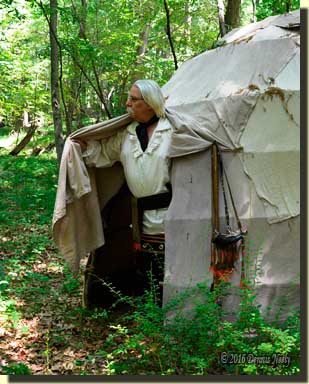 Red Fox pushed away the canvas flap. To the left, “Old Turkey Feathers,” his Northwest gun, leaned against the structure’s third rib. A buffalo horn and Odawa-style shot pouch hung from the trade gun’s muzzle. The shot pouch’s woven bead strap, and the plain buckskin strap of the horn, slipped over the woodsman’s gray head and came to rest on his left shoulder. With a quick grab, the Northwest gun became one with his right hand as his moccasins whisked to the west, up through the hidden valley and over the rise.
Red Fox pushed away the canvas flap. To the left, “Old Turkey Feathers,” his Northwest gun, leaned against the structure’s third rib. A buffalo horn and Odawa-style shot pouch hung from the trade gun’s muzzle. The shot pouch’s woven bead strap, and the plain buckskin strap of the horn, slipped over the woodsman’s gray head and came to rest on his left shoulder. With a quick grab, the Northwest gun became one with his right hand as his moccasins whisked to the west, up through the hidden valley and over the rise.
In no time the shimmering brownish ribbon that was the River Raisin appeared in the distance. Unseen from the hill’s crest, Canada geese ke-honked somewhere on the sand flats. Down the hill and out into the bottomlands, a downy woodpecker drummed on a dead white ash. The woodsman’s course turned south with no specific purpose and followed the ridge that overlooked the river. A pleasant morning stroll through an 18th-century Eden was reason enough…
“it’s all ‘stuff’…”
Accoutrement quality found its way into a traditional black powder hunting conversation at Friendship, Indiana, two weekends ago. I was down for the National Muzzle Loading Rifle Association’s Spring Shoot. It was a whistle stop visit; I had a long list of folks to see and vendors to visit. I didn’t even take “Old Turkey Feathers” along. Our group grew from three to seven or eight in the course of a short discussion that swelled into almost an hour’s discourse.
“The way I look at it,” a longtime friend and veteran traditional woodsman (who asked to remain anonymous) said, “it’s all ‘stuff.’ You can spend a lot of money, or you can go cheap. What’s important is that you research your persona and try to stick with the common accoutrements that character more than likely had.”
To prove his point, he pulled a well-used tomahawk from his leather belt. “What do you think of this ‘hawk?” he asked, handing the tomahawk to the man to his right who was also dressed as a longhunter and said he dabbled with history-based hunts. The first recipient flipped the blade over in his palm, looking for a touch mark or indication of the maker. He rubbed his thumbnail over a patch of oily rust. A few deep nicks scarred the haft, which showed a nice patina, but not from creative staining or artificial aging. “Well, what do you think?” the owner asked.
“I haven’t got a clue. The shape appears English, rather than French. Mid- to late-18th century, perhaps into the early 1800s; you can see the forged seam; and it looks like a steel bit was welded in. Without a touch mark it’s hard to say, but it’s well made, hand forged and not cast,” he said handing the ‘hawk to the fellow to his right.
“I don’t know, either,” the owner said, shaking his head. “I bought it off a trade blanket. I think I gave thirty dollars for it a dozen years ago. But the size and shape matched one I saw in a museum. The head was found at a trading post…not that far from where I live. That post was only active for ten years, and the time frame matched mine, the 1760s. I’ve hunted with it ever since I bought it.”
A knife with a similar nondescript pedigree joined the show and tell. My friend went on to explain that he puts greater importance on having an authentic looking accoutrement that functions properly than how much he pays for it or who the maker is.
“The point I am trying to make,” he said, “is like most of us, I have limited time to hunt. I want to spend as much of that time in the 1760s forest as I can, not sitting at the computer shopping online or obsessing about the perfect ax or knife or bag or whatever. It’s still all ‘stuff.’”
Authenticity made its way to the fore in this discussion, as it so often does. But the meat of the conversation centered on an honest, well-researched persona from a living historian’s perspective, and the utilitarian side of a given accoutrement from the traditional hunter’s perspective.
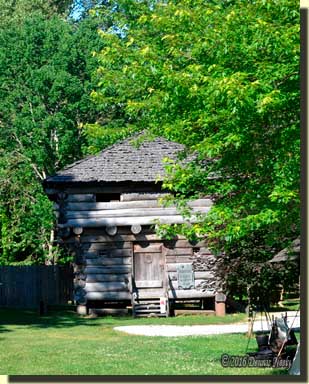 Saturday morning found me up in the primitive camp near the two-story log block house. Two camps shared a common fly, and the occupants were setting out goods on three trade blankets spread in front of the fly. The majority of the items were clothing—lots of clothing—with a few small accoutrements.
Saturday morning found me up in the primitive camp near the two-story log block house. Two camps shared a common fly, and the occupants were setting out goods on three trade blankets spread in front of the fly. The majority of the items were clothing—lots of clothing—with a few small accoutrements.
An average-sized, forty-something gentleman walked over, picked up a pair of buckskin leggins that were in pretty good condition and held them up to his thigh. His wife asked if he thought they would work. He pursed his lips, but did not answer. About then one of the owners who was the same build as the shopper, came over and asked if there were any questions.
The man said he was just starting to assemble “a Rev War scout/hunter’s kit, early 1780s, Pennsylvania country.” I was impressed that he had done some research and at least had the “who, when and where” of living history figured out. Then he pulled out a folded paper from his hip pocket, which turned out to be several sheets of computer paper. The printouts included photos of artifacts and a list of what he needed. He laid the leggins aside in the grass and started looking over the knee breeches next.
In the conversation that followed, I discovered a newcomer to traditional black powder hunting. The gent wanted to expand his club shooting to include the primitive events, but being a hunter, he also wanted to take advantage of Pennsylvania’s flintlocks-only muzzleloading deer season. He said he knew he was going to make mistakes with his purchases, but he wanted to “get going” and not spend a lot of time or money on his first traditional persona. I thought of the conversation from a day earlier.
The fellow tending the trade blanket did his part, too. A former persona of his was similar to what the shopper described, so he picked up items that “went together.” After welcoming him and leaving a card with the URL to this site, I moved on. Before I walked away, the trader had two piles of clothes and was offering his tent as a changing area. “If you are going to hunt in period clothing, you have to make sure each item fits properly,” he said.
So often this type of conversation centers on purchasing a first muzzleloader. The advice is always the same: start with an inexpensive production gun, hunt with it for at least one season and then invest in a better arm once you have a solid idea of your “who, when and where.” This was the underlying crux of the “it’s all stuff” conversation.
In the last couple of years, it seems that more and more newcomers to traditional black powder hunting have come to the hobby with the misconception that “you have to be period-correct” before you ever set foot in the glade. That is not correct and should not be perpetuated by those of us who have frolicked in the 18th century forest with great regularity.
As the soon-to-be Pennsylvania back country scout and hunter said, we should encourage folks to “get going” with a minimal investment and make adjustments from there. I’m just as guilty of this as anyone else. Experienced living historians harp on “period-correct, period-correct, period-correct,” but we fail to remember that we had a bit of a steep learning curve when we started out in the glorious pastime. After all, traditional black powder hunting is all about stepping over time’s threshold and experiencing a joyous romp in our own historical version of Eden.
Give traditional black powder hunting a try, be safe and may God bless you.
Posted in Clothing & Accoutrements, Persona, Scouts
Tagged Black powder hunting, Dennis Neely, Mountain Man, Native captive, North West trade gun, Northwest trade gun, traditional black powder, traditional black powder hunting, traditional blackpowder, traditional blackpowder hunting, Traditional camping, Traditional Woodsman
Comments Off on Our Own Historical Version of Eden
“Time for Fishing”
“Snapshot Saturday”
Posted in Fishing, Snapshot Saturday
Tagged Black powder hunting, Dennis Neely, historical trekking, Mountain Man, Native captive, North West trade gun, Northwest trade gun, trade gun, traditional black powder, traditional black powder hunting, traditional blackpowder, traditional blackpowder hunting, Traditional camping, Traditional Woodsman
Comments Off on “Time for Fishing”
“It is a Good Morning…”
Campfire smoke mingled with a thick, soupy fog. A yellowy-orange light lurked behind a silhouetted eastern tree line. Calm, humid air carried the scent of smoldering oak, damp canvas and a faint whiff of backcountry bacon. Dew droplets splashed as elk moccasins whisked on through short grass with no intended destination.
To the right, the slow, rhythmic “thump…thump…thump” of a camp ax splitting kindling punctuated a red-breasted robin’s cheery twill. In the distance, the two-story log blockhouse looked abandoned, yet its presence offered an unmistakable sense of frontier security to the canvas village.
A couple sat beneath a dining fly. The gent smiled and said, “Good morning, sir.”
“Good morning,” I replied.
A wispy white plume snaked westward from his fire pit. A well-used water pot sat on a forged grate above the coals. It was then that I realized the sun was full up, its rays streaking through the maple that shaded the couple’s humble abode in the afternoon.
Two camps south a gray-bearded woodsman flung open a tent’s front flap. His blue-checked trade shirt hung long. Five cast-pewter buttons lined the right leg of his knee breeches, reflecting dawn’s brilliant light as he rummaged through an old wooden cassette. “Good morning, sir,” he said.
“Good morning,” I said.
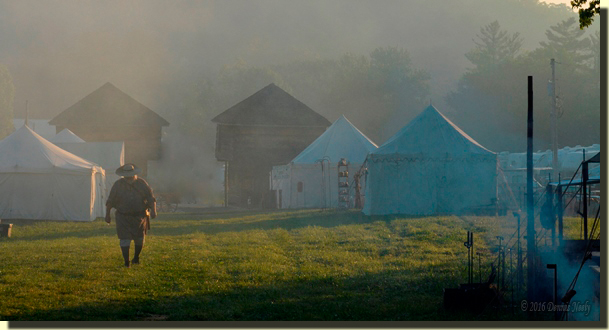 As I do in the forest, I turned a bit to check my back trail. The high gates, the ones suspended from the twin blockhouses to the north of the valley, were now propped opened. Beyond, a murky haze shrouded the sycamores and maples that lined Laughery Creek. Three camps into the commons, an unarmed wilderness tenant walked in peace, following the same approximate path as I.
As I do in the forest, I turned a bit to check my back trail. The high gates, the ones suspended from the twin blockhouses to the north of the valley, were now propped opened. Beyond, a murky haze shrouded the sycamores and maples that lined Laughery Creek. Three camps into the commons, an unarmed wilderness tenant walked in peace, following the same approximate path as I.
I recognized David Brattain’s stature and gait. We, along with a number of other hearty souls, defended the fort against attack two Junes ago. David is a rifleman of noted skill, a marksman one wishes on his or her side in a heated scuffle.
As he passed, he waved at the couple. “Good morning,” he said.
“It is a good morning,” the gent responded. “I don’t have my shirt on. Please excuse me.”
“You’re okay, you’ve got fur,” Brattain said with a broad smile and a deep-chested chuckle. With that, the old friends struck up a conversation as a new day dawned at Friendship…
The Mystical Solitude of Friendship
Rounding the sharp curves on the narrow road into Friendship, Indiana, the home of the National Muzzle Loading Rifle Association, is always a challenge. Keeping in your own lane requires concentration, a concentration that shuts the rest of the world out of one’s conscious thought. When the grade flattens out, turns right and passes over Laughery Creek, a mystical amnesia seems to fall upon my being.
It is not that I am a different person; I am the same me. Yet, “Friendship,” the single word used to describe this mythical black powder shooting sports haven, brings to the fore interests that the tribulations of everyday life suppress. For a brief period, be it one day, a few days or a week, the Friendship experience provides a peaceful solitude that is difficult to find these days.
Take the walk up to the block house on the far end of the Curly Gostomski Primitive Campground. Each moccasin step presents the potential for a new adventure. I say that often about traditional hunting, but the adventures at Friendship are somewhat different, because they involve other people, not just the birds and beasts of the glade. There are new friends to meet and old acquaintances to catch up with—and with great sadness, there are some who will never return.
That Saturday morning I ended up sitting under a fly with Brattain, David Higgins and Chuck Ziegler. While David Higgins tended sizzling sausages, David Brattain laid out knives on a trade blanket. Ziegler sat in the shade, spoke to passers by and egged everyone else on. The foolishness and good-natured kidding was non-stop and so was the laughter. The innuendos and nuances were subtle at times, bold and brash at others. Again, one must concentrate in such situations, or risk being left in jovial dust.
A few camps over, a fine longrifle, a painstaking reproduction of an 18th-century Lancaster, was the focus of a deep, historical dissertation. I watched and listened and marveled at the knowledge possessed by the trio as they pointed and prodded the patient. Not wishing to interrupt, knowing I had nothing to contribute, I slipped away.
I admired the craftsmanship of the builder, his devotion to the minutest detail and the understanding displayed by his colleagues, but I also felt a nagging sense of ignorance. My interests are in the trade guns, especially the Northwest gun. Yet, despite my best efforts, I cannot keep my Whatelys and Wilsons and Barnetts straight.
On another occasion a vendor in the “sheep sheds,” the name Merrill Deer gave to the terra-cotta-painted, lean-to buildings of commercial row, invited me to sit with him. His large box fan brought welcomed relief from the afternoon heat, which this Michigan boy does not tolerate well. Our conversations wandered all over muzzleloading; an hour passed in a blink of an eye.
The center of the Friendship universe is a shared love of American history, the black powder arms of our ancestors and the preservation of both. The organization’s venues and disciplines are many and varied, each with its own following. One’s vocation is of little importance or relevance. What one’s brother- or sister-in-law did last week carries no sway, either.
And after a day’s worth of shooting, the evening offers an opportunity to sit around, relax and be with shooters, collectors or builders of a like mind. Even in the June heat and humidity, campfires are the norm. The smell of smoke adds to the ambiance and contributes to the next morning’s haze in a sort of self-perpetuating cycle. Staring into the flames and glowing embers is optional, but practiced by many.
So often, someone at a local club or among a group of traditional hunters will mention that he or she has never been to Friendship. After the “You have to go at least once,” comes the usual statement that “but it’s hard to describe. You have to go and experience it for yourself.”
My meager words barely scratch the surface. For those of us who love the arms of our forefathers, Friendship is like no other place on earth. When I arrive, child-like excitement fills my being, and when I leave, angry butterflies fill my stomach for the next fifty or so miles.
As it stands right now, I cannot attend the September National Championship Shoot. Driving down for a single day does not assuage my addiction, rather it aggravates it. But even then, when I round the bend and cross over Laughery Creek the amnesia returns, as it always has, and I find myself wrapped in the mystical solitude that surrounds Friendship.
Give traditional black powder hunting a try, be safe and may God bless you.
Posted in General, Living History
Tagged Black powder hunting, Dennis Neely, historical trekking, Mountain Man, Native captive, North West trade gun, Northwest trade gun, trade gun, traditional black powder, traditional black powder hunting, traditional blackpowder, traditional blackpowder hunting, Traditional camping, Traditional Woodsman
Comments Off on “It is a Good Morning…”
“Not so much by Luck”
“Snapshot Saturday”
Posted in Quail Hunts, Skills, Snapshot Saturday
Tagged Black powder hunting, Dennis Neely, French D Trade Gun, historical trekking, Mountain Man, Native captive, North West trade gun, Northwest trade gun, trade gun, traditional black powder, traditional black powder hunting, traditional blackpowder, traditional blackpowder hunting, Traditional Woodsman
Comments Off on “Not so much by Luck”
Returned to its Rest…
Light snow fell. White, ball-like granules the size of goose shot pattered on damp leaves. Dark clouds, the color of quenched iron, brought a chill that caused a humble fort hunter’s nose to drip. Winter moccasins, lined with two layers of trade blanket, whispered along a doe trail on that second day of May in the Year of our Lord, 1793.
That morning’s course dropped into the little valley north of Fox Hill. The trail crested a rise, then dropped again. The still-hunt paused at a downed oak top that still held the previous summer’s foliage. The only sound was hard snow balls popping all about—no geese on the river, no Sandhill cranes, no blue jays, no cardinals and no wild turkeys. The buffalo-hide moccasins pressed on…
 A red oak’s bark cut into the shoulder of my hunt-stained, caped linen shirt as I leaned, watched and listened. The eerie silence continued, brought on by the snow squall, I surmised. Ahead, a twisted tangle that once was an oak tree top, beckoned. Deer paths passed on either side of that fortification. The trail I followed intersected both, perhaps twenty paces from the thickest mess.
A red oak’s bark cut into the shoulder of my hunt-stained, caped linen shirt as I leaned, watched and listened. The eerie silence continued, brought on by the snow squall, I surmised. Ahead, a twisted tangle that once was an oak tree top, beckoned. Deer paths passed on either side of that fortification. The trail I followed intersected both, perhaps twenty paces from the thickest mess.
Step and pause…step and pause… The still-hunt progressed at half speed. One buckskin-clad leg, then the other eased over a big branch. Down on both knees, I surveyed the woods and the three paths. After a fair amount of silence, a hand-forged ax slipped from its leather sheath.
“Whack.” A single swing severed a finger-sized twig. “Whack…” A look-about… “Whack…” Glance again… “Whack…” Its work done, the ax returned to its rest…
Suited to More than One Task
I don’t always carry an ax or tomahawk on a traditional hunt; sometimes I leave the ‘hawk at the station camp and travel as light as possible. On that morning, I had the belt ax, the one hand-forged by the late George Ainslie. It was patterned after an ax found in the Pennsylvania area and dated to 1750 to 1830.
The polled head weighs about 12 ounces and it is hafted with a 14 inch hickory handle. Years ago I made a cowhide sheath with a narrow leather shoulder strap, which carries well. This ax lacks “the beef” of the Hudson Bay tomahawk or the Long Lake ax, but it still is a great companion for a trading post hunter’s morning turkey chase.
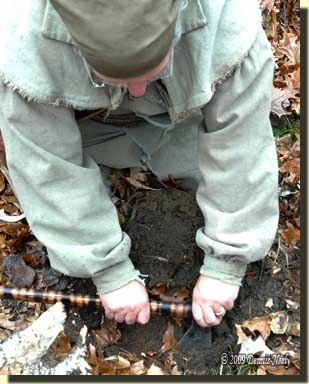 I use my axes and/or tomahawks for a variety of tasks, both in the field and back at camp. Cutting or pounding are the top two uses, but I dig with the blade, use the edge to shave bark or whittle down a wooden implement, like a new haft, or scrape hides. I haven’t been in battle, so none of my axes have found an adversary’s temple—but I have cut bone, mostly hip saddles when field dressing a big whitetail.
I use my axes and/or tomahawks for a variety of tasks, both in the field and back at camp. Cutting or pounding are the top two uses, but I dig with the blade, use the edge to shave bark or whittle down a wooden implement, like a new haft, or scrape hides. I haven’t been in battle, so none of my axes have found an adversary’s temple—but I have cut bone, mostly hip saddles when field dressing a big whitetail.
The little belt ax’s head is fixed solid to the handle, but the hafts on the tomahawks and the Long Lake ax will slip out of the eye, turning the head into a multi-purpose tool. “Multi-purpose tool” are the operative words there. I view each accoutrement as having many purposes, some I have yet to discover.
About eight years ago, at a Woods-N-Water Outdoor Weekend at the Eastern Michigan Fairgrounds in Imlay City, I leaned “Old Turkey Feathers,” my Northwest trade gun, against our display table. I do that often when talking with guests. As I spoke with a couple of fellows, another gentleman bumped the table with his hip. The gun fell. He was mortified, and kept apologizing. I told him, “You can’t hurt this gun. It’s been used for more than it was intended. I’ve even used it for a canoe paddle, once.”
The last statement led to the story of knocking my paddle out of the canoe on a duck hunt. As I watched the River Raisin’s current sweep the paddle downstream, there was little choice but to dump the pan, wipe it out, set the hammer down and start paddling. As always, Old Turkey Feathers was up to the challenge, but I made it a point not to dip too low and submerge the touch hole.
After that story the gentleman seemed relieved; he shouldered the gun and paid particular attention to all the nicks and scratches, including the missing finish on the forestock. I went on to explain that an unloaded trade gun makes a good measuring stick when laying out a half-faced camp or a wigwam. The smoothbore acts as a walking stick on a treacherous hillside (butt down) or adds balance to getting up after sitting cross-legged on a bedroll. With an empty barrel (checked first with the wiping stick), the lock will send sparks into char for starting a fire, much as Alexander Henry did in the 18th-century (Armour, Attack…, 87).
Any simple pursuit is filled with unexpected circumstances, and at any moment a traditional woodsman may be called upon to use his or her wits and the limited 1790-era resources available. Traveling light further compounds the issue, but at the same time surviving with the minimum of accoutrements helps one look at the wilderness with new and inventive eyes.
Looking at the other extreme, I have a good friend who is mainly a line shooter. Occasionally he shoots “hunter matches” out of the pouch, but his leather pouch is more like a duffle bag—about ten inches by ten inches with a three inch gusset. For the hunter matches he often shoots a nice flint Pennsylvania longrifle, .54-caliber, I think.
If he were traveling light, he needs a powder measure (not necessarily period-correct, but best for safety sake), patches, round balls, a vent pick, a spare flint or two and a gun worm. Depending on the muzzle and the tightness of the patch/ball fit, a short starter might be in order, too.
But then we start stuffing the Thanksgiving turkey with all of the items we might need for the five-, ten- or twenty-shot match. There are separate cleaning patches, a bottle of “moose milk,” a buckskin sack with a ball puller, spare worm, spare jag, screw-on rod extension, and a linen drawstring bag with a mainspring vice, spare springs, an extra frizzen and assorted lock screws. We have an adjustable powder measure, a brass funnel and two bags of round balls, five-thousands over and under the ones chosen. Oh, and the bronze ramrod puller, a patch knife and extra rolls of patching, different thicknesses, of course, two turnscrews and a small set of needle-nosed Vice Grips®.
Now all of these “extras” can be justified by actual range experiences—my friend has boxes of shiny medals attesting to his marksmanship, accumulated over 30-plus years of shooting competition.
I’ve tried on a number of occasions to convince him to give traditional black powder hunting a go, but he balks. As he says, “I don’t want to lug all that stuff into the woods. Do you know how much that bag weighs?” Instead, he wears camo coveralls with appropriate hunter orange and carries four plastic speed loaders in his pocket. “If I have a problem, I can walk back to the car…” he says, justifying his modern version of traveling light.
Give traditional black powder hunting a try, be safe and may God bless you.
Posted in Clothing & Accoutrements, Turkey Hunts
Tagged Black powder hunting, Dennis Neely, historical trekking, Native captive, North West trade gun, Northwest trade gun, traditional black powder, traditional black powder hunting, traditional blackpowder, traditional blackpowder hunting, Traditional camping, Traditional Woodsman
1 Comment
“A Doe’s Bed”
“Snapshot Saturday”
Posted in Deer Hunts, Snapshot Saturday
Tagged Black powder hunting, Dennis Neely, historical trekking, Mountain Man, North West trade gun, Northwest trade gun, trade gun, traditional black powder, traditional black powder hunting, traditional blackpowder, traditional blackpowder hunting, Traditional Woodsman
Comments Off on “A Doe’s Bed”
Waiting on the Next Trade Blanket
“Scu-reeeeee…Scu-reeeeee,” a red-tailed hawk cried as it banked its wings and drifted south over the River Raisin’s bottomland. A blue-wool-clad leg stepped over a rotted oak trunk. Two fox squirrels chased their way off the ridge crest, spewing dry leaves with no apparent concern for stillness. The second appeared more into playing than the first.
A pileated woodpecker swooped low, then rose straight up and gripped the barkless side of an oak’s dead limb. It cocked its red topknot from side to side, then up and down. A blue jay clenched the lowest branch of a fine shagbark hickory, growing tall a dozen paces east. A woodland pause seemed in order on that pleasant, late-October afternoon in the Year of our Lord, 1796.
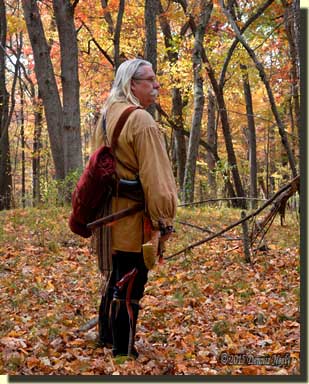 The two bushytails treed as the red-tailed hawk circled back over the forest. The first hugged a modest branch festooned with browning foliage. A few moccasin steps west would have brought the little beastie within the realm of the anxious death bees, sequestered tight in “Old Turkey Feathers’” breech. But a fresh wild turkey dinner sounded better than squirrel and dumplings that day.
The two bushytails treed as the red-tailed hawk circled back over the forest. The first hugged a modest branch festooned with browning foliage. A few moccasin steps west would have brought the little beastie within the realm of the anxious death bees, sequestered tight in “Old Turkey Feathers’” breech. But a fresh wild turkey dinner sounded better than squirrel and dumplings that day.
Dusty buffalo-hide moccasins pressed south, bent on a white oak treetop downed that spring in a mighty thunderstorm. The still-hunt’s course wandered through the tiny valley. Tree-to-tree the stalked ascended the hill. At the crest, I weaseled my way into the entwined branches, seeking the top’s main crotch.
My left moccasin cleared away the leaves. The bedroll, a common burgundy trade blanket bound with a leather portage collar, slipped over my head and found its way into the back of the nest. I leaned the Northwest gun against the big limb, but before I sat I pulled the butcher knife and sliced away three small twigs. With the knife back in its leather sheath, I sat cross-legged and eased the trade gun over that big limb.
An earthen trail crossed over that ridge between the trunk and the top. Every other night or so, a flock of wild turkeys used that path to reach an old monarch of a roost tree with broad-spreading limbs, two ridges to the west. The afternoon before found me a fair distance from the white oak top, but still within eye sight. Those seven birds did not use the trail, which boosted my confidence in bringing a wild turkey to the table.
The Small Butcher Knife Blade from Friendship
Out of unconscious habit, I fiddled with the knife’s handle to make sure it was all the way back in the sheath. That knife dropped out on a pheasant hunt one evening, and I was lucky to find it just before dark. One doesn’t want to be backtracking in buckskin moccasins with an angry knife loose on the path…
As I sat hidden within that white oak top, I realized I had used that particular butcher knife off and on for over twenty-five years. It was the “small butcher knife” blade made by Green River Knife Works, which I think was part of the Russell Knife Company back then. I bought it off a trade blanket in the primitive camp at Friendship in the late 1980s. I fashioned the handle from a cutting of wild cherry taken from the North-Forty and I used warm boiled linseed oil for the finish.
I’m heading off to Friendship this next weekend, and I’m starting to get excited. I can’t stay long, and most of the days will be spent “working,” as Tami says. But one of the joys of wandering through the primitive camp is rummaging through the trade blankets.
The merchandise has changed over the years; it’s not the same as it once was. The Internet and the various forums or social media “for sale” pages garner the best prices for the more valuable trade items. That said, there are still great treasures waiting on trade blankets—and “the hunt” is often more fun than “the find.”
If one has a solid, usable “kit,” the pounds and pence don’t burn the pocket quite as much. And with a well-researched persona, a shopper becomes all that more discerning when it comes to a purchase. But in recent years, items for the grandchildren have found their way onto the shopping list. And then there is the “happened upon find of a lifetime” that might be lurking on the red four-point one camp over…
 Years ago I acquired the components for Tami’s .40-caliber southern mountain rifle at Friendship. She was shooting competition with “The Silver Cross,” her cut-down chief’s grade trade gun, and a Hopkins and Allen .36-caliber under-hammer buggy rifle my daughters learned on. I knew she needed a nice flintlock for the primitive matches, and I planned to work on that project the following winter. As luck would have it, her competition gun came to the fore in a hurry.
Years ago I acquired the components for Tami’s .40-caliber southern mountain rifle at Friendship. She was shooting competition with “The Silver Cross,” her cut-down chief’s grade trade gun, and a Hopkins and Allen .36-caliber under-hammer buggy rifle my daughters learned on. I knew she needed a nice flintlock for the primitive matches, and I planned to work on that project the following winter. As luck would have it, her competition gun came to the fore in a hurry.
The first afternoon at Friendship, I happened upon a “priced to sell” maple stock, rough carved in the southern mountain rifle pattern. A couple of worm holes just ahead of the lock panel and a bad bark inclusion at the nose put that stock in the bargain/almost-firewood pile. She likes the simple lines of a plain gun, so I thought “that’s a start.” I wrapped the stock in a spare towel and tucked it out of sight in the pickup.
Someone else had a .40 caliber Green Mountain barrel that had been cut down, something under 36 inches. I knew the shorter length barrel would be easier for Tami to handle, plus that took the bark inclusion out of play. After a little dickering, the barrel joined the stock in the gold towel—what an appropriate color towel, too.
A gun builder getting out of the trade had the correct breech plug snuggled in with a dozen others displayed on a dirty white towel. The butt plate was at the bottom of a greasy, well-worn cardboard box of goodies. The trigger guard was in a pile of “seconds” steel castings over in the “Sheep Sheds;” the air bubbles almost polished out. The plain steel thimbles were an easy find. I had the ramrod blank and a steel tip. I bought the lock from a good friend who spent his evenings assembling and tuning locks for a known vendor.
As I said, it’s harder now to find trade blanket treasures, but not impossible. Many times I don’t find the items that carry a high priority on the want list, but then a good smoothbore barrel peeks out from under a petticoat and a couple of rusting tin lanterns. And that’s the fun of this version of a traditional black powder hunt—not knowing what might be waiting on the next trade blanket.
Stop me and say “Hi” at Friendship, be safe and may God bless you.
Posted in General, Turkey Hunts
Tagged Black powder hunting, Dennis Neely, historical trekking, Mountain Man, Native captive, North West trade gun, Northwest trade gun, trade gun, traditional black powder, traditional black powder hunting, traditional blackpowder, traditional blackpowder hunting, Traditional Woodsman
1 Comment


